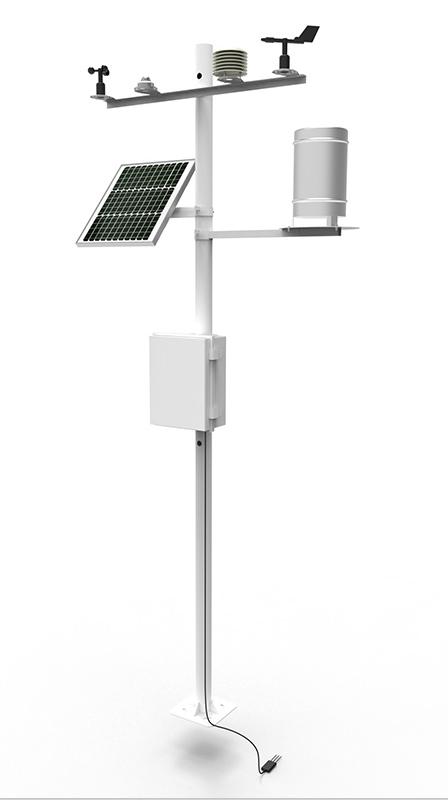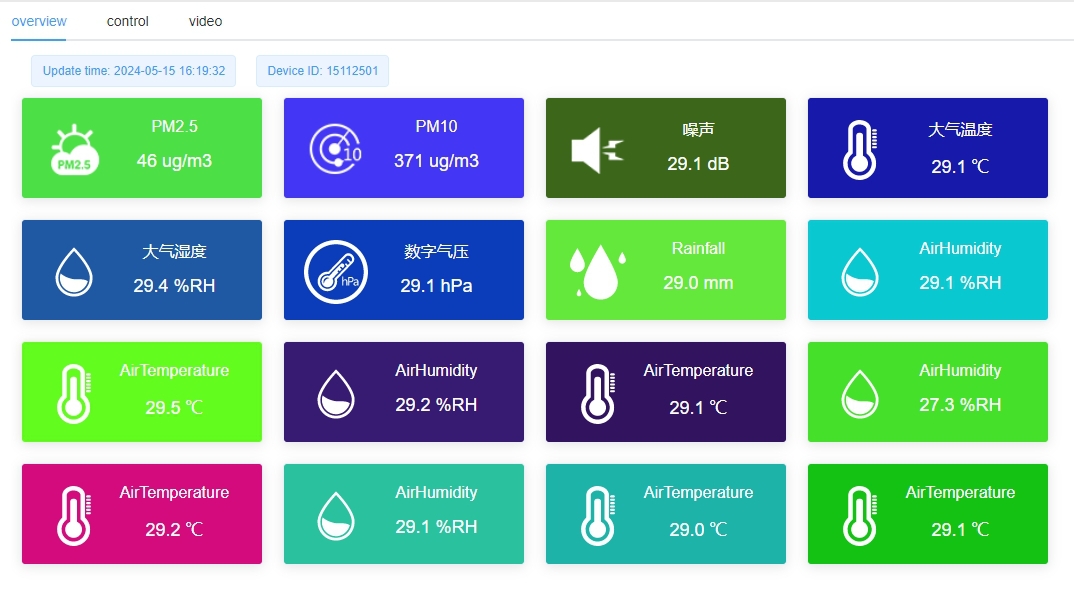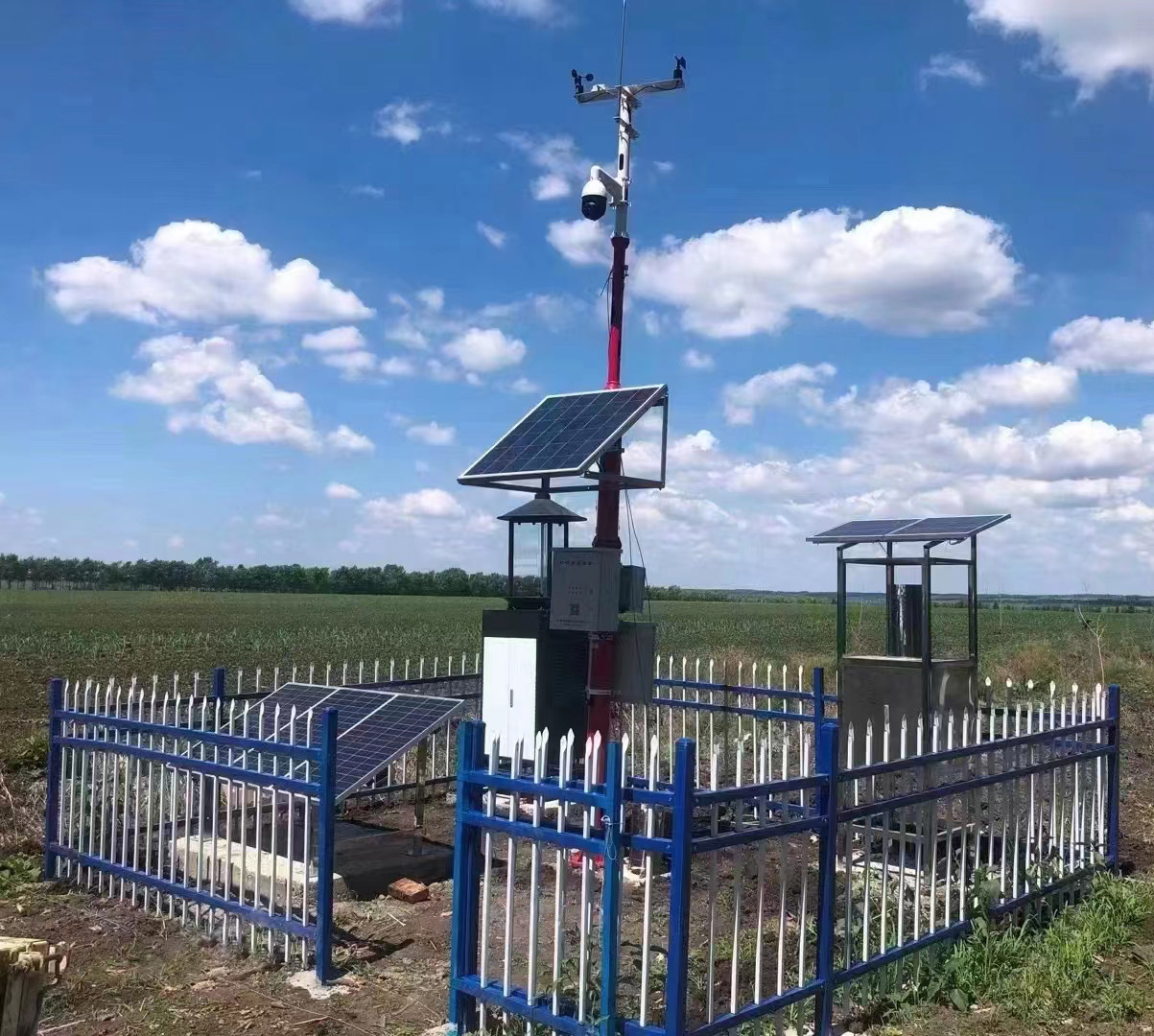

— Blogs —
—Products—
 Consumer hotline +8618073152920
Consumer hotline +8618073152920 WhatsApp:+8615367865107
Address:Room 102, District D, Houhu Industrial Park, Yuelu District, Changsha City, Hunan Province, China
Product knowledge
Time:2022-07-11 10:17:08 Popularity:632
In recent years, the agricultural industry has witnessed significant developments, and with this progress, agricultural meteorological stations have become increasingly integrated into agricultural planting operations. These stations play a vital role in monitoring essential meteorological elements that impact crop growth and overall agricultural productivity. By providing accurate and real-time data on various environmental factors, agricultural meteorological stations contribute significantly to smart agriculture and improve farming practices.
Agricultural meteorological stations are designed to monitor a variety of meteorological elements, including temperature, humidity, wind speed, rainfall, soil moisture, and solar radiation. These measurements are critical for ensuring optimal growing conditions for crops. The primary goal is to collect accurate, real-time data on environmental factors that influence agricultural production. With this information, farmers can make informed decisions that help improve crop yields and mitigate risks posed by extreme weather events such as droughts or storms.
Beyond basic meteorological observations, agricultural meteorological stations also monitor agricultural organisms in parallel. This means that the stations observe the conditions that affect crops and livestock, analyzing favorable and unfavorable weather conditions that influence their growth. By tracking these conditions, the stations help farmers understand how environmental factors impact crops and animals, thereby enabling timely interventions to ensure optimal agricultural practices.

According to the World Meteorological Organization (WMO), agricultural meteorological stations are classified into four categories, each serving different roles and requirements:
1. Main Agricultural Meteorological Stations: These are the primary stations responsible for comprehensive data collection and reporting. They are often equipped with advanced sensors and equipment to monitor a wide range of meteorological and agricultural variables.
2. General Agricultural Meteorological Stations: These stations focus on monitoring basic meteorological elements that impact agricultural activities but may not have the full range of equipment found in main stations.
3. Auxiliary Agricultural Meteorological Stations: These are smaller stations with a limited set of monitoring capabilities, typically serving supplementary roles in larger agricultural networks.
4. Special Agricultural Meteorological Stations: These stations are designed to monitor specific conditions or phenomena, such as extreme weather events or agricultural pests, which require specialized sensors and equipment.
Each type of station is equipped with staff and equipment tailored to its specific functions, allowing for targeted data collection and analysis to support agricultural production.

One of the key features of modern agricultural meteorological stations is their flexibility and ease of installation. These stations are designed to be adaptable to various on-site environments, considering factors like the height difference of vegetation or crop types. The equipment is installed in a way that does not interfere with crop growth, ensuring that the station’s presence has minimal impact on the agricultural operation.
Additionally, agricultural weather stations use wireless communication technology to transmit data, which simplifies installation and enables seamless integration with other systems. This allows for real-time data monitoring and analysis, either through a standalone station or as part of a multi-station network. The data collected from various stations is sent to a central system where it can be processed, analyzed, and visualized to provide valuable insights for farmers.
The integration of agricultural meteorological stations into farming operations significantly enhances the ability to monitor and respond to changing weather conditions. For example, in rice planting, the station can provide real-time data on rainfall, temperature, wind speed, and other critical factors that affect crop growth. If the system detects excessive rainfall, which may be detrimental to rice growth, it can trigger alerts. In response, farm staff can take appropriate measures, such as adjusting irrigation or protecting crops from flooding, to minimize the impact on the harvest.
By continuously tracking weather patterns and soil conditions, agricultural meteorological stations enable farmers to make timely, data-driven decisions that enhance crop production and resilience. This is especially valuable in regions prone to unpredictable weather events, such as droughts, floods, or extreme temperatures.

Agricultural meteorological stations help farmers optimize their agricultural practices in several key ways:
1. Improved Resource Management: By monitoring environmental conditions like soil moisture and temperature, farmers can optimize water usage, reducing waste and ensuring crops receive the right amount of water at the right time.
2. Crop Zoning and Planning: By analyzing the distribution of agricultural natural resources and potential natural disasters, meteorological stations help in planning the spatial distribution of crops. This allows for better crop zoning, where different crops are planted in regions best suited to their growing requirements, improving productivity.
3. Microclimate Adjustment: Agricultural meteorological stations support farmers in artificially adjusting microclimates within their farms. For example, by monitoring temperature and humidity, farmers can use irrigation systems or shade structures to create optimal growing conditions, especially for sensitive crops.
4. Early Warning for Natural Disasters: These stations are capable of detecting early signs of adverse weather conditions, such as storms or droughts. Early warnings allow farmers to take preventative measures, such as securing crops or adjusting planting schedules, to mitigate potential damage.
To illustrate the impact of agricultural meteorological stations, let's consider rice planting as an example. In rice farming, weather conditions such as rainfall, temperature, and soil moisture directly influence crop health and yield. An agricultural meteorological station installed on a rice farm can provide real-time data on these factors, allowing farmers to adjust their practices accordingly.
For instance, if the weather station detects a heavy rainfall event, it can provide information on the exact amount of rainfall and the forecasted conditions. If the rainfall is excessive, which could lead to flooding or waterlogging—two conditions detrimental to rice plants—the station can trigger an alarm for farmers. This enables them to take preventive measures, such as improving drainage systems or temporarily protecting the crops, to reduce the negative impact.
Agricultural meteorological stations play a pivotal role in smart agriculture by providing farmers with real-time data and insights that help optimize farming practices and improve crop yields. These stations monitor a wide range of meteorological and agricultural factors, such as temperature, rainfall, soil moisture, and solar radiation, allowing farmers to respond quickly to changing environmental conditions.
By leveraging data collected from agricultural meteorological stations, farmers can make informed decisions that lead to more efficient resource use, better crop management, and improved resilience to natural disasters. As agriculture becomes increasingly dependent on technology and data-driven decision-making, the role of agricultural meteorological stations in supporting sustainable and profitable farming practices will continue to grow.
Related recommendations
Sensors & Weather Stations Catalog
Agriculture Sensors and Weather Stations Catalog-NiuBoL.pdf
Weather Stations Catalog-NiuBoL.pdf
Related products
 Combined air temperature and relative humidity sensor
Combined air temperature and relative humidity sensor Soil Moisture Temperature sensor for irrigation
Soil Moisture Temperature sensor for irrigation Soil pH sensor RS485 soil Testing instrument soil ph meter for agriculture
Soil pH sensor RS485 soil Testing instrument soil ph meter for agriculture Wind Speed sensor Output Modbus/RS485/Analog/0-5V/4-20mA
Wind Speed sensor Output Modbus/RS485/Analog/0-5V/4-20mA Tipping bucket rain gauge for weather monitoring auto rainfall sensor RS485/Outdoor/stainless steel
Tipping bucket rain gauge for weather monitoring auto rainfall sensor RS485/Outdoor/stainless steel Pyranometer Solar Radiation Sensor 4-20mA/RS485
Pyranometer Solar Radiation Sensor 4-20mA/RS485
Screenshot, WhatsApp to identify the QR code
WhatsApp number:+8615367865107
(Click on WhatsApp to copy and add friends)